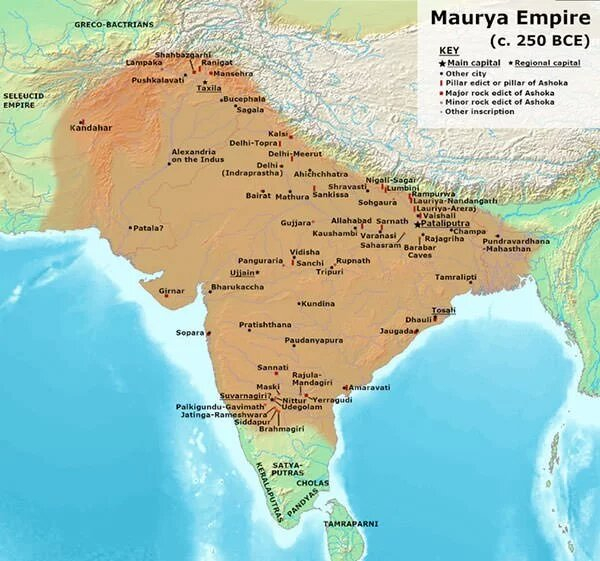The Maurya Empire reached its greatest territorial extent under Ashoka
The evidence implies that Ashoka was not the Mauryan empire's crown prince. After Bindusara's death, political strife lasted for several years, until Ashoka was formally anointed emperor around 269 BCE. Sushima, Bindusara's eldest son, is recognized by Ashokavandana as the crown prince, and Ashoka is recognized as the usurper who, with the help of his allies, eliminated Sushima and any other obstacles to his emperorship. According to the Mahavamsa, Ashoka returned from Ujjain to Patliputra to seize the crown, and in the process, he killed his eldest brother. It goes on to say that during his fight for the throne, Ashoka slaughtered 99 of his half-brothers. The number is 100 in the Sri Lankan literature Dipavamsa ("Chronicle of the Island"), whereas it is 6 in the 16th century Tibetan monk Taranath.
Historians agree that numbers like 99 and 100 may be exaggerations intended to contrast Ashoka's later metamorphosis into a Buddhist, or simply a means of indicating that Ashoka slaughtered several of his brothers. At the age of 35, Ashoka was formally anointed King of India. In his early reign as a monarch, he was ambitious and ruthlessly aggressive. He expanded the Maurya Empire even farther, ruling over a territory that stretched from modern-day Afghanistan to Bangladesh in the east. It covered the entire Indian subcontinent, except for parts of modern-day Tamil Nadu, Karnataka, and Kerala. Pataliputra (in Magadha, present-day Patna) served as the empire's capital, with provincial capitals in Taxila and Ujjain. During the reign of Asoka, the Maurya Empire expanded to its highest extent. This is considered one of the major achievements of Ashoka the great.











